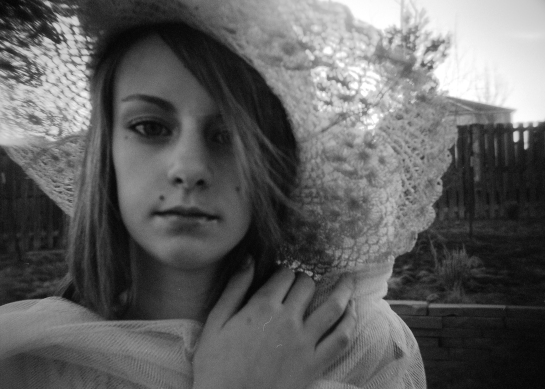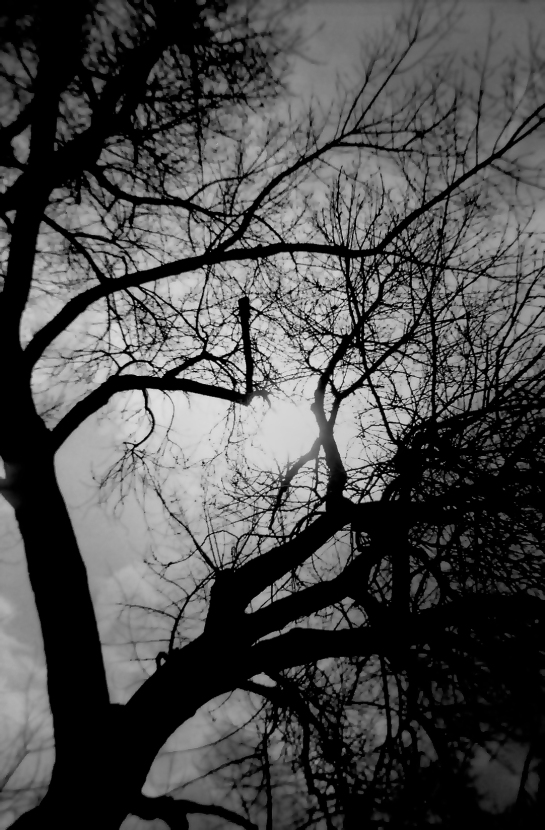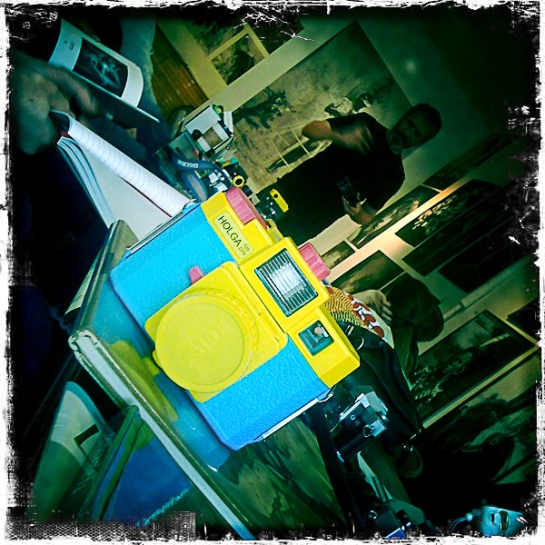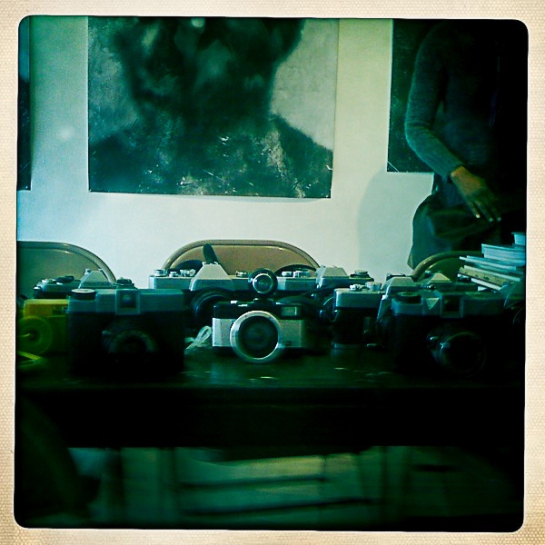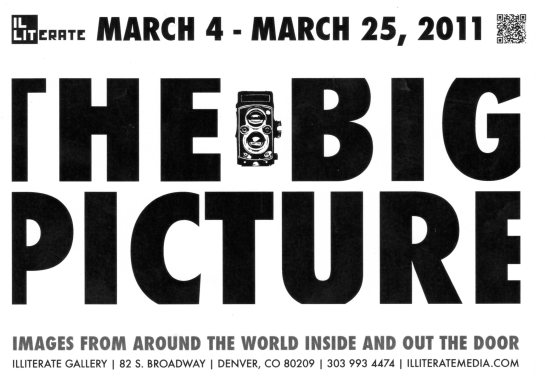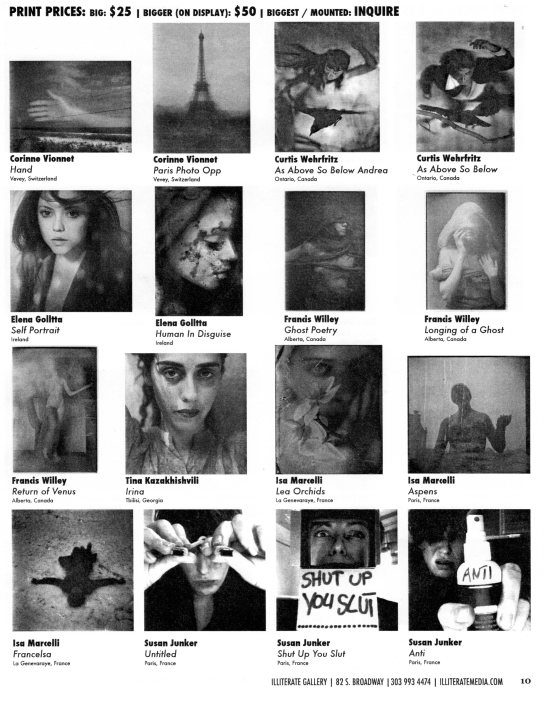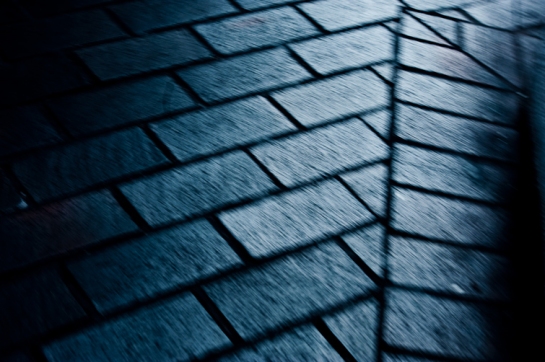Lake McConaughy is truly one of my most treasured places to visit. I ache to get back to camping in the sand, with that Nebraska wind, and amazing sunset sky.
This information following has nothing to do with my pretty pictures, but it’s a history of the place. The photographs are scanned film from my holga camera.

As early as the 1880’s, citizens of south-central Nebraska discussed the possibility of bringing irrigation to the area. Interest in irrigation grew with each successive drought cycle until the drought and economic depression of the 1930’s helped convince state and federal officials and community leaders of the need for irrigation.
The Public Works Administration approved funding for the hydro-irrigation project in 1935 and construction began in 1936. Kingsley Dam was closed and dedicated in 1941 and project operations began soon afterward.
The dam and reservoir are named for George P. Kingsley, a Minden, Nebraska banker, and C.W. McConaughy, a grain merchant and mayor of Holdrege, Nebraska, two of the leading promoters of the project. Although neither lived to see the completion of the project, their leadership and perseverance eventually culminated in a public power and irrigation project that helped Nebraska become one of the nation’s leading agricultural states.
History of Kingsley Dam
The Kingsley Dam, located 9 miles north of Ogallala, Nebraska, is the second largest, hydraulic fill dam in the world. It is over 162 feet high, 3.1 miles long, has 26 million cubic yards of material, and holds a body of water that is 22 miles long and 142 feet deep called Lake McConaughy.
The Kingsley Dam was formed by the pumping of a mixture of loess soil and water into the ground, making a watertight core. Lake Ogallala was formed from the pumping of the soil into Kingsley Dam. It is 35 feet deep, 1.6 miles long, and .3 miles wide.
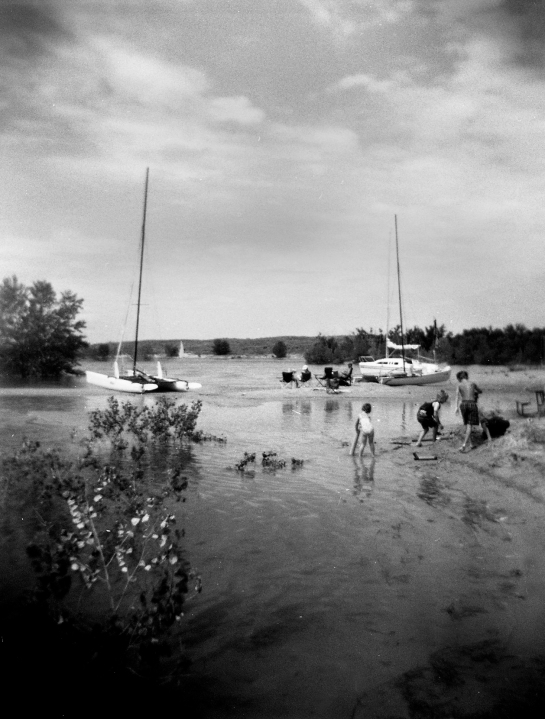
Even though it is smaller than Lake McConaughy, it’s in the middle class size of lakes in Nebraska. Sand from the riverbed below was pumped to form the sides of the dam. Then, to make sure that nothing would try to go under the dam, giant steel sheets were driven into the watertight core and into the ground below. The water facing side of the dam is layered with limestone rocks from Wyoming and 180,000 “jackstones.”
A jackstone is a 6-pointed stone that looks similar to a toy jack, weighing over 800 pounds each, for a combined weight of 144 million pounds. It is said, that if the dam collapses, the city of North Platte, located 50 miles to the east, has 45 minutes to evacuate before their city is destroyed.
A unique feature to the Kingsley Dam is the water release and flood control system. The system is located on the south side of the dam, partially in the water and is composed of two parts, the outlet tower and the morning glory spillway. The outlet tower is 185 feet tall, 42 feet wide, has one ring gate and 4 tractor gates that regulate normal water release functions like irrigation. The gates are located on the sides and middle of the structure. The structure is connected to a 20 foot wide, steel reinforced, concrete tube that runs underground to the power plant on the other side of the dam. When all the gates are open, it can release over 7,000 cubic feet per second, or over 420 thousand gallons a minute.

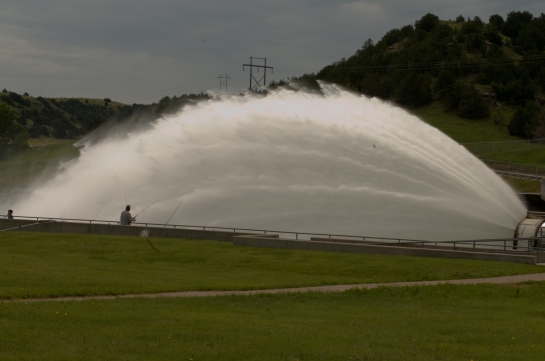
I threw in two digital photographs from 2009. Pretty cool tail on that dam. It’s thrilling to stand next to it. The guys like to hang around it and fish.
The Morning Glory spillway is named for the way it’s shaped. It looks like a morning glory flower if you’re looking down into it. It is used only in emergencies when water levels are too high. The Morning Glory has 12 gates that are 16 feet high, 22 feet wide, 3 feet thick, and can discharge 54,000 cubic feet per second, or 3,240,000 gallons a minute. This water is released through an opening on the opposite side of the dam.
This photo has nothing to do with a morning glory shape, but sunflowers grow wild all over Nebraska. We brought some sand home the past couple summers and Nebraska sunflowers are invading our territory. I don’t mind. I love them.
This is downtown Oshkosh, Nebraska, which is about 20 minutes from the lake. I was born in this town. Love the For Sale sign.
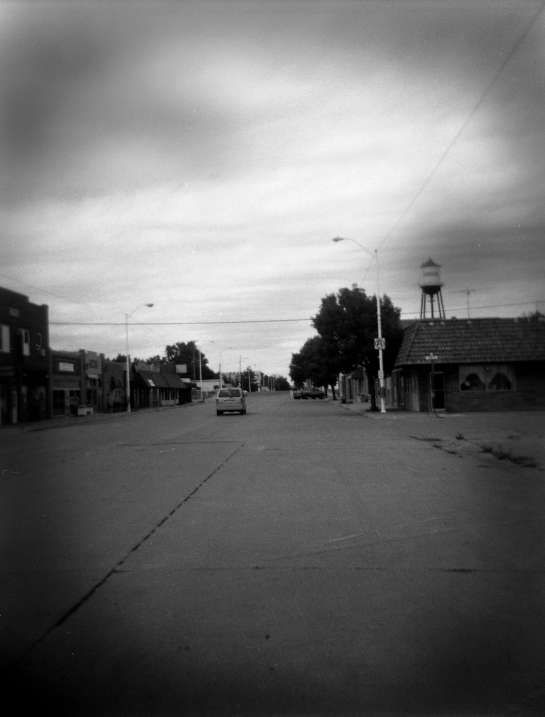
Another glance of Oshkosh, Nebraska. Honk! Honk!















